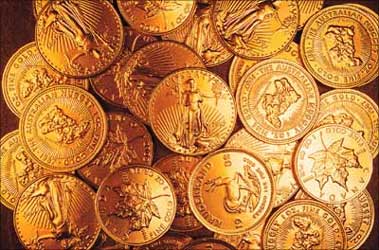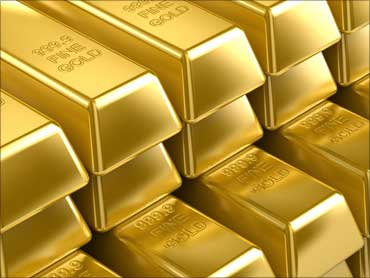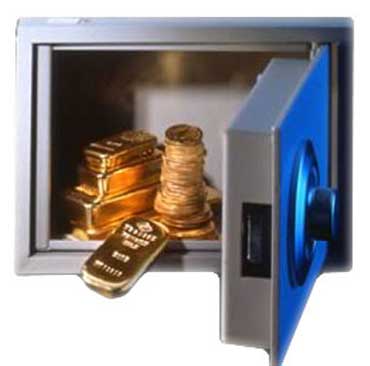
Barring on Thursday, the price of gold has been on an upward swing since last week, when it touched an all-time high of $1,249.40 an ounce, on fears that the European Union's debt reduction measures could depress global economic growth.
However, in Thursday's trade at the bullion market, the yellow metal eased 2.5 per cent to $1,180 a day after Germany banned naked short-selling in the euro bond market and expressed concerns about the euro.
In India, gold hit a high of Rs 18,325 per 10 gm last week on global cues. On Thursday, again, it dropped Rs 145 to Rs 18,090 from Wednesday's close.
Viral Shah, senior vice-president, Geojit Commtrade, said: "We continue to see demand from exchange-traded funds and commodity exchanges." In the past month, prices have risen three-four per cent.
...

This demand, and global uncertainties, will push prices up, say analysts. Subodh Gupta, a commodity analyst at Anand Rathi, said: "We expect the precious metal to touch $1,400 an ounce in the next three-four months. In India, the price could go as high as Rs 20,000 per 10 gm."
Despite rising prices, financial planners say one should maintain at least 5-10 per cent of a portfolio as gold. Anil Rego, chief executive of financial planning firm Right Horizons, said: "Gold is a good avenue to balance the risk of equity. Classically, both have an inverse correlation. Current volatility will be short-lived. In the long term, gold is steady."
Preferably, the investment should be through ETFs. This electronic form of buying, selling and storing gold is more convenient and price-effective than buying the metal in the physical form. For example, if an investor keeps gold in a bank locker, he has to spend money on storage. Even selling physical gold is not an easy task.
"Unless gold is being bought for immediate consumption, say a marriage, it does not make sense to buy physical gold," said Shah.
...

According to Value Research, an agency that tracks mutual funds, gold ETFs gave 23 per cent returns last year (as on May 18). Experts say ETF investments should be systematic. That is, one should buy the metal at different price levels in small amounts. "If possible, buy on every dip," said Gupta.
For those who do not want to go through the pain of opening a demat and a trading account, there are gold funds-of-funds.
These function like mutual fund schemes. They collect money from investors, either lump sum or every month, to invest in gold ETFs.
High risk-takers who understand commodity futures and options can also look at gold mini-contracts of 100 gm through commodity exchanges.
If you have a lump sum to invest, on a risk-reward basis, gold futures are a better option. The reason: The leverage factor is phenomenal as the margin requirement is less than five per cent.
...

However, in gold futures, near-month contracts are liquid and a person with a long-term view (six months or a year) will have to roll over the contract - buy a new one and sell the old one.
And, there's a price to that. "Brokers charge up to two per cent for buying gold futures, 0.125 per cent for rollover of contracts and up to one per cent for gold delivery," said a broker.
If you already own gold, experts say it is time to start booking profit, as prices are expected to correct anytime from here (to Rs 17,000 levels) and then move up again. They advise selling in small portions at current levels to profit at different price levels.
The other catch is currency prices. Gold trades in the dollar in international markets. The euro fell to a fresh four-year low against the dollar this week.
The rupee also slipped to its lowest in three months on Thursday on speculation of importers sales. A falling rupee means costlier gold.